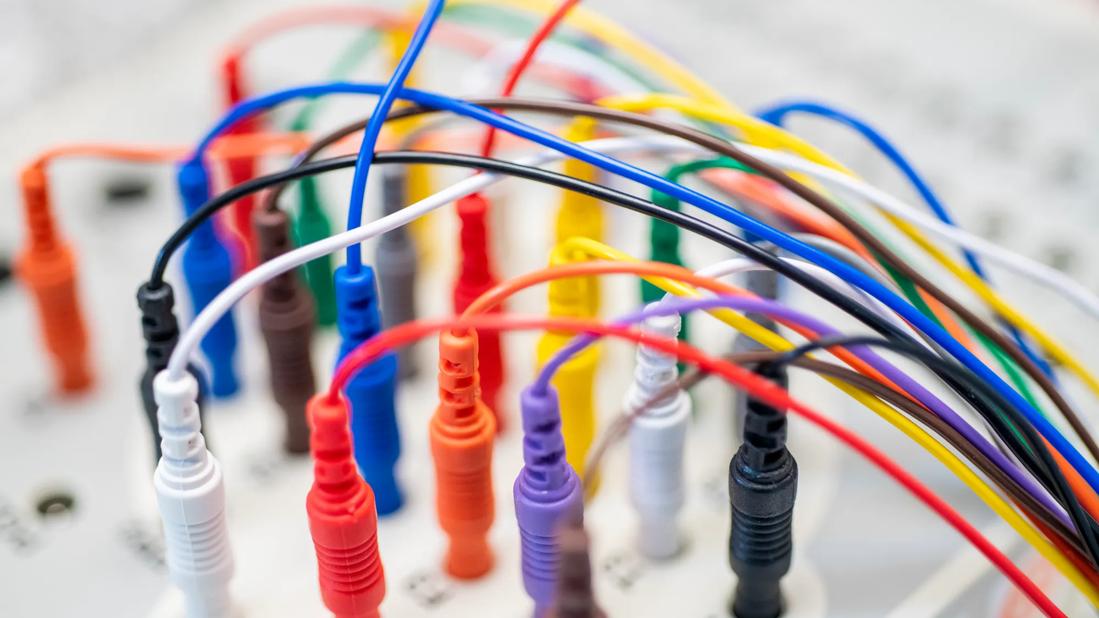The neuroactive steroid significantly reduces seizures related to CDKL5 deficiency disorder

A drug that modulates the GABAA receptor is providing hope for children with CDKL5 deficiency disorder (CDD), a rare form of genetic epilepsy characterized by early-onset, intractable seizures.
Advertisement
Cleveland Clinic is a non-profit academic medical center. Advertising on our site helps support our mission. We do not endorse non-Cleveland Clinic products or services. Policy
Ganaxolone — a neuroactive steroid — recently was approved by the FDA to treat CDD, which occurs in approximately 1 in 40,000 live births. The disease is caused by mutations in the cyclin-dependent kinase-like 5 (CDKL5) gene on the X chromosome.
Expected to be commercially available in July, ganaxolone is the first treatment specifically for seizures in CDD, and its approval was based on results of the placebo-controlled, double-blind Marigold study. Data from this international, multicenter phase 3 clinical trial and preliminary results from an open-label extension study were presented at the American Academy of Neurology’s annual meeting in early April. They showed that ganaxolone significantly reduced major motor seizures (MMS) relative to placebo in children and adults with CDD. [Editor’s note: The study has since been published in full online by The Lancet Neurology (2022;21[5]:417-427).]
“The reduction in 28-day frequency of major seizures was 30.7% in the ganaxolone group compared with 6.9% in the placebo group,” says Elia Pestana Knight, MD, a pediatric epileptologist in Cleveland Clinic’s Charles Shor Epilepsy Center and a principal investigator for the study.
The trial included 101 patients aged 2 to 21 years from the U.S., Russia, Australia, France, Israel, Italy, Poland, and the U.K. who had a disease-related CDLK5 gene variant. All had a minimum average of 16 MMS per 28 days during a two-month period prior to screening. Of them, 79% were female and they had taken up to four concomitant antiseizure medications (ASMs) per month with failure to respond to at least two of them. The most common ASMs prescribed were valproate, levetiracetam, clobazam and vigabatrin.
Advertisement
“Recent data (J Neurodev Disord. 2021;13[1]:40) have shown that in patients with CDD, response to ASMs is low, ranging from 5% to 36%, depending on the time on treatment,” says Dr. Pestana Knight. “There is a great unmet need because many of these individuals present before age 2 months and traditional ASMs are not effective. The high doses of the drugs they are given in an attempt to control the seizures also often result in a worsening of the cognitive, behavioral and physical consequences of the disease.”
Randomization was to 63 mg/kg/day or a maximum of 1,800 mg/day of adjunctive ganaxolone (n = 50) or placebo (n = 51) for 17 weeks. The primary endpoint was 28-day MMS frequency (MMSF). Secondary endpoints were the percentage of patients with ≥ 50% reduction in MMSF and change in Clinical Global Impression of Improvement (CGI-I) score.
Median 28-day MMSF rates at baseline in the ganaxolone and placebo groups were 54 and 49.2, respectively. In addition to the statistically significant decrease in MMSF (30.7% vs. 6.9%; P = 0.0036) associated with treatment, ganaxolone was associated with numerically (but not significantly) greater improvement in CGI-I score and rates of ≥ 50% MMSF response relative to placebo. One component of the CGI-I score, caregiver impression of seizure intensity/duration, showed statistically significant improvement with ganaxolone versus placebo.
Reports of treatment-emergent adverse events (TEAEs), serious TEAEs and TEAEs leading to study drug discontinuation were similar in the ganaxolone and placebo groups during the 17-week double-blind phase. The most common TEAEs were somnolence (36.0% vs 15.7% for ganaxolone and placebo, respectively) and pyrexia (18.0% vs. 7.8%).
Advertisement
“The drug was very well tolerated,” says Dr. Pestana Knight. “The overall rate of serious TEAEs was 12% in the ganaxolone group and 9.8% in the placebo group. The discontinuation rates were also very low — 4% with ganaxolone and 8% with placebo.”
Preliminary results from the open-label extension study provide supportive evidence for maintenance of ganaxolone’s effect on reducing MMSF associated with CDD.
At 12 months, MMSF per 28 days was reduced by 46.5% in those originally randomized to the drug who stayed on it, and by 53.8% in those originally randomized to placebo who transitioned to ganaxolone. As in the study’s 17-week double-blind phase, the maximum daily dose was 63 mg/kg up to 1,800 mg/day taken in three divided doses. Adverse events in the extension phase were consistent with those in the double-blind phase and ganaxolone’s known safety profile.
Beyond assessing how ganaxolone works, Cleveland Clinic researchers also are looking at ways other than counting seizures to measure the impact of treatments for CDD. “We are working with other CDKL5 Centers of Excellence and the International Foundation for CDKL5 Research to develop scales that can be used to assess all the aspects of the disease in future clinical trials,” Dr. Pestana Knight notes.
Right now, she says, neurologists have a key tool they can use to facilitate diagnosis of patients with CDD and other early-onset epileptic encephalopathies: genetic testing. “Please screen children with early-onset epilepsy for mutations,” she urges. “A panel for genetic epilepsy testing that covers over 270 genes has been available for children younger than age 8 years via the Behind The Seizure® sponsored program. It’s a tremendous resource, and ordering the test is easy and straightforward.”
Advertisement

Advertisement
Advertisement

Large NIH-funded investigation is exploring this understudied phenomenon

Advances in genomics, spinal fluid analysis, wearable-based patient monitoring and more

Case study of radial-to-axillary nerve transfer for tumor-related deltoid nerve injury

An update on the technology from the busiest Gamma Knife center in the Americas

Real-time adjustments may help reduce bothersome dyskinesias

Anatomical modeling can identify optimal surgical candidates, study suggests

Add AI to the list of tools expected to advance care for pain patients

New guidelines from Brain Trauma Foundation urge early and aggressive treatment